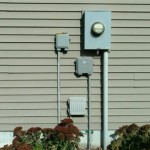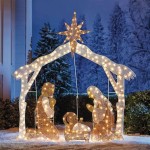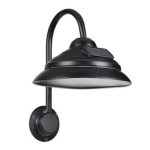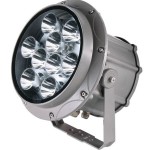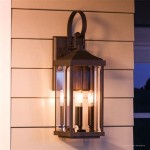What Are The Strongest Outdoor Solar Lights
Outdoor solar lights have become increasingly popular as a sustainable and cost-effective alternative to traditional electric lighting. The market offers a vast array of solar lights, each with varying degrees of brightness, durability, and functionality. Determining which lights provide the strongest and most reliable illumination requires a thorough understanding of the underlying technology, materials, and performance metrics.
The primary strength of a solar light lies in its ability to efficiently convert sunlight into usable electricity and subsequently transform that electricity into bright, consistent light. This involves several key components working in concert, including the solar panel, battery, and LED light source. A deficiency in any of these components can significantly impact the overall performance and brightness of the light.
Understanding Key Components and Their Impact on Brightness
The strength of an outdoor solar light is directly linked to the quality and specifications of its core components. Each element plays a crucial role in determining how effectively the light can capture solar energy, store it, and then emit it as visible light. A closer examination of these components is essential for identifying the strongest performing options.
The solar panel is the initial point of energy acquisition. Its efficiency in converting sunlight into electricity is paramount. Solar panels are typically made of silicon, with monocrystalline panels generally offering higher efficiency compared to polycrystalline panels. A higher efficiency rating means the panel can generate more electricity from the same amount of sunlight, leading to a brighter light output and longer runtimes. The size of the panel also matters; larger panels generally capture more sunlight and produce more power. Look for panels constructed with tempered glass or a protective coating to withstand various weather conditions and maintain optimal performance over time.
The battery stores the electricity generated by the solar panel. Battery capacity, measured in milliampere-hours (mAh), directly affects how long the light can operate on a full charge. Lithium-ion batteries are commonly used in high-quality solar lights due to their high energy density, long lifespan, and relatively low self-discharge rate. A larger battery capacity will allow the light to operate for longer periods, especially during cloudy days when solar charging is limited. The battery's voltage also needs to be compatible with the LED light source to ensure optimal performance and longevity. Consider the battery's operating temperature range as extreme temperatures can negatively impact its performance and lifespan.
The LED (Light Emitting Diode) is the light source itself. The type of LED, its power consumption (measured in watts), and its luminous output (measured in lumens) are all critical factors. Lumens are a direct measure of the total amount of visible light emitted by the LED. A higher lumen rating indicates a brighter light. However, efficiency is also important. Some LEDs are more efficient than others, producing more lumens per watt of energy consumed. Look for LEDs with a color temperature that suits your needs. Warm white light (around 2700-3000K) provides a cozy ambiance, while cool white light (around 4000-5000K) offers brighter, more focused illumination. The LED's lifespan is also a factor; high-quality LEDs can last for tens of thousands of hours.
Identifying Performance Metrics and Specifications
To accurately assess the strength of an outdoor solar light, it's essential to evaluate its performance metrics and specifications. These values provide quantifiable data that allows for a direct comparison between different models. Understanding these metrics allows consumers to make informed decisions based on actual performance characteristics rather than relying solely on marketing claims.
Lumen output is the most straightforward indicator of brightness. A higher lumen rating translates to a brighter light. However, consider the beam angle as well. A wide beam angle will spread the light over a larger area, while a narrow beam angle will focus the light on a smaller area, resulting in a more intense spotlight effect. The choice of beam angle depends on the specific application of the light, whether it's for general illumination or targeted lighting.
Battery capacity determines how long the light can operate on a full charge. Look for the manufacturer's specifications regarding runtime, which indicates the number of hours the light can operate at full brightness after a full day of charging. Keep in mind that runtime can vary depending on factors such as weather conditions, the amount of sunlight received, and the age of the battery.
Solar panel efficiency is typically expressed as a percentage. The higher the percentage, the more efficient the panel is at converting sunlight into electricity. A more efficient panel will charge the battery faster and allow the light to operate for longer periods, especially in areas with limited sunlight.
IP (Ingress Protection) rating indicates the level of protection against dust and water. A higher IP rating signifies greater resistance to environmental factors. For outdoor solar lights, an IP rating of IP65 or higher is recommended to ensure they can withstand rain, snow, and dust without malfunctioning. The first digit indicates protection against solid objects, and the second digit indicates protection against liquids.
Factors Affecting Performance and Longevity
While the specifications of the solar panel, battery, and LED are crucial, several external factors can affect the overall performance and longevity of outdoor solar lights. Understanding these factors allows for proactive measures to maximize the lifespan and effectiveness of the lights.
Sunlight exposure is the most critical factor. Solar lights rely on direct sunlight to charge their batteries. The more sunlight the panel receives, the more electricity it can generate. Position the lights in a location where they will receive at least 6-8 hours of direct sunlight per day. Avoid placing them in shaded areas or under trees, as this can significantly reduce their charging efficiency.
Weather conditions can significantly impact the performance of solar lights. Cloudy days reduce the amount of sunlight available for charging, which can lead to shorter runtimes. Extreme temperatures can also affect the battery's performance and lifespan. In cold weather, battery capacity may decrease, while in hot weather, the battery may overheat. Choosing lights with wider operating temperature ranges helps mitigate these issues.
Maintenance is essential for prolonging the lifespan of solar lights. Regularly clean the solar panel to remove any dust, dirt, or debris that can block sunlight. Periodically check the battery terminals for corrosion and clean them if necessary. If the lights are not being used for extended periods, it's recommended to store them in a cool, dry place and charge the batteries occasionally to prevent them from completely discharging.
The quality of materials used in construction influences durability. Selecting lights made from weather-resistant materials, such as stainless steel, aluminum, or high-impact plastic, can ensure they withstand harsh outdoor conditions. Check the warranty offered by the manufacturer, as it can provide an indication of the product's expected lifespan and reliability.
The placement and mounting of the solar lights can also affect their performance. Ensure that the lights are securely mounted to prevent them from being damaged by wind or other environmental factors. Consider the angle of the solar panel and adjust it to maximize sunlight exposure. Some lights have adjustable panels that allow you to optimize the angle based on the season and location.
Technological advancements continue to improve the efficiency and performance of solar lights. New battery technologies, more efficient LEDs, and advanced solar panel designs are constantly being developed. Staying informed about the latest advancements can help you choose the most powerful and reliable solar lights available.

5 Best Outdoor Solar Lights Glow Up Your Gardens And Pathways Of 2025 Reviewed

Best Solar Garden Lights For Your Outdoor Space Posh Living

The Best Solar Path Lights Of 2025 According To Testing

5 Best Outdoor Solar Lights Glow Up Your Gardens And Pathways Of 2025 Reviewed

Solar Pathway Lights Outdoor Waterproof Bright Led Landscape Garden 8 Pack

5 Best Outdoor Solar Lights Glow Up Your Gardens And Pathways Of 2025 Reviewed

Best Solar Light Outdoor Led Filament Style Path Lights In Black Weatherproof Metal 10x Brightness 3000k 4 Pack

The 10 Best Outdoor Solar Lights Vetted Purewow

Best Solar Garden Lights To Create A Cosy Glow In 2024 Gardens Ilrated

Solar Lighting Commercial Landscape Elite Designs
